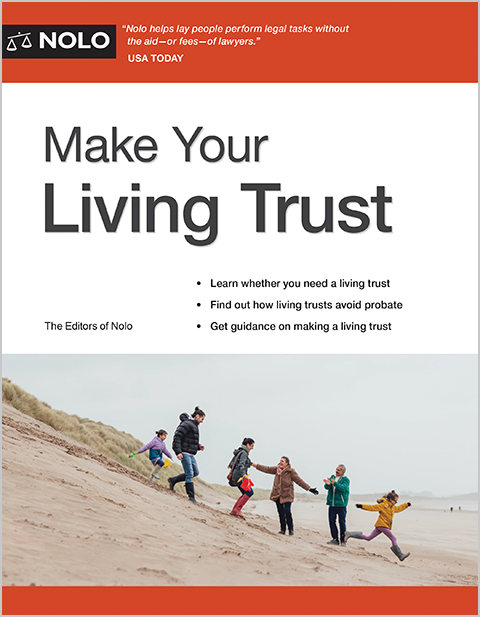CalABLE accounts help those with special needs save money while remaining eligible for disability benefits.
ABLE accounts are bank accounts that allow people with special needs to save money without jeopardizing their disability benefits. ABLE accounts come from the federal ABLE (Achieving a Better Life Experience) Act, but they are established and managed on a state level.
Most states have ABLE accounts, and each state has slightly different rules and procedures for opening and using an ABLE account.
California does have an ABLE program, called CalABLE. The program is open to residents and nonresidents, and California residents can open ABLE accounts in other states that allow it. See additional details below.
Save Money Without Penalty
When people with special needs apply for disability benefits, they must show that they don't have enough money to support themselves independently. Any money a person has in a traditional bank account counts against that person's ability to qualify for disability benefits.
As a result, people with special needs aren't able to build savings with the money they earn or that they receive through inheritance or gifts. On a day-to-day basis, this means that people with special needs must live with very little money if they want to receive government aid.
One workaround for this issue is to use a special needs trust which provides a place to save money that can be used for the benefit of the person with special needs (without affecting eligibility for benefits). But special needs trusts must be controlled by a trustee—not by the person with special needs who benefits from the trust. Not only does this leave a person with special needs with little control over their finances, but it also limits the person's independence.
ABLE accounts fill this gap by giving people with special needs the opportunity to manage a modest bank account without penalty against their eligibility for SSI, Medicaid, or other government benefits.
Federal Rules for ABLE Accounts
The basic rules for all ABLE accounts come from the federal ABLE Act. (Read the federal act here.) When states adopt and implement the ABLE Act, they must follow the federal rules and can also add their own rules and regulations. Here are some of the federal rules:
- Disability qualifications. To qualify to use an ABLE account, an individual must have a disabling condition that began before age 26.
- Only one account. Each person can only have one ABLE account.
- Anyone can put money in the account. Anyone can contribute money to an ABLE account, including the owner with a disability.
- Contributions are capped annually. The limit for 2025 is $19,000.
- For many, the account cannot exceed $100,000. For those who qualify for SSI, the balance of an ABLE account cannot exceed $100,000. For those who do not qualify for SSI, see the state rule, below.
- Use of funds is limited. Funds in an ABLE account must be used for Qualified Disability Expenses (QDE)—expenses that are "related to the blindness or disability" of the account holder.
- Account funds are not taxed if used properly. The income earned from the funds in ABLE accounts is not taxed. Contributions are made with post-tax dollars, and distributions made for QDE are tax-free.
- Unused funds pay Medicaid. When a person with a disability dies, any funds remaining in an ABLE account will be used to reimburse Medicaid for services the person received from that program.
Read more about the federal rules in ABLE Savings Accounts for People With Special Needs.
When individual states adopt the ABLE Act and provide ABLE accounts for their residents, they may also make rules and policies about:
- minimum amounts required to open an account
- fees
- availability of accounts to non-residents
- state income tax deductions for contributions
- account rollovers
- debit cards, and
- investment portfolios.
CalABLE Accounts—California's ABLE Plan
CalABLE, California's ABLE 529 program, launched in December 2018. Here are some details.
- Common name: CalABLE
- Website: https://calable.ca.gov/
- Statute: Cal. Welf. & Inst. Code §§ 4875-4885
- Program manager: Vestwell State Savings LLC
- Investment institutions: Vanguard, Fidelity, Schwab, BNY Mellon
- Account limit: $529,000 (but you can lose your eligibility for SSI if your account exceeds $100,000)
- Open to out-of-state residents: Yes
- Minimum amount to open an account: $25
- Debit or prepaid card available: Yes
- Investment options: 9 options that vary in risk
- Annual account fees: The state annual maintenance fee is $30, which is billed at a quarterly rate of $7.50
- Range of investment or asset-based fees: 0%-0.53%.
Employed individuals can contribute more. In addition to the $19,000 (in 2025) annual contribution, if the disabled person is working and not contributing to a defined contribution plan, deferred compensation plan, or annuity, the person can also contribute an additional amount to the CalABLE account: up to the lesser of 1) their annual salary before tax or 2) $15,060 (in 2025; this number is tied to the federal poverty level and is adjusted each year for inflation).
Penalties. If you use your account funds on something that is not a Qualified Disability Expense, you may have to pay income taxes, a 10% additional federal tax, and a 2.5% California state tax on any earnings made on these funds.
You can learn about and compare ABLE accounts across the country at the website of the ABLE National Resource Center.
An ABLE account is just one planning tool for people with special needs. You might also be interested in learning more about Special Needs Trusts or Estate Planning in California on Nolo.com.
Ready to create your will?



